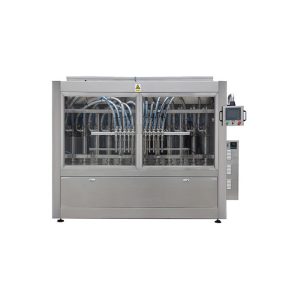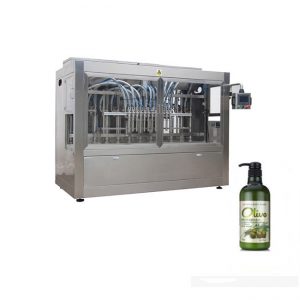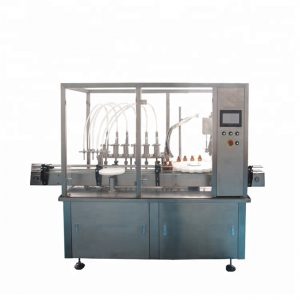Shampoo Filling Machine
Shampoo production
Shampoos are cleaning formulations used for a wide range of applications, including personal care, pet use, and carpets. Most are manufactured in the same manner. They are composed primarily of chemicals called surfactants that have the special ability to surround oily materials on surfaces and allow them to be rinsed away by water. Most commonly, shampoos are used for personal care, especially for washing the hair.
The history of shampoo
Before the appearance of shampoos, people typically used soap for personal care. However, soap had the distinct disadvantages of being irritating to the eyes and incompatible with hard water, which made it leave a dull-looking film on the hair. In the early 1930s, the first synthetic detergent shampoo was introduced, although it still had some disadvantages. The 1960s brought the detergent technology we use today.
Over the years, many improvements have been made to shampoo formulations. New detergents are less irritating to the eyes and skin and have improved health and environmental qualities. Also, materials technology has advanced, enabling the incorporation of thousands of beneficial ingredients in shampoos, leaving hair feeling cleaner and better conditioned.
How it is made ?
Cosmetic chemists start creating shampoos by determining its features like how thick it should be, what color it will be, and what it will smell like. They also consider performance attributes, such as how well it cleans, what the foam looks like, and how irritating it will be with the help of consumer testing.
Then the shampoo formula will be created using various ingredients like water, detergents, foam boosters, thickeners, conditioning agents, preservatives, modifiers, and special additives. Which classified by the cosmetic, toiletry, and fragrance association (ctfa) as the international nomenclature of cosmetic ingredients (inci).
After the creation of the formula, a stability testing takes place, which primarily is used to detect physical changes in such things as color, odor, and thickness.
Also provides information about other changes, like microbial contamination and performance differences. This testing is done to ensure that the bottle of shampoo that is on the store shelves will perform just like the bottle created in the laboratory
The manufacturing process
Manufacturing process can be broken down into two steps:
first, a large batch of shampoo is made, and then the batch is packaged in individual bottles.
Compounding
Large batches of shampoo are made in a designated area of the manufacturing plant,following the formula instructions to make batches that can be 3,000 gals or more.
They are poured into the batch tank and thoroughly mixed.
Quality control check
After all the ingredients are added to the batch, a sample is taken to the quality control (qc) lab for testing. Physical characteristics are checked to make sure the batch adheres to the specifications outlined in the formula instructions. After a batch is approved by qc, it is pumped out of the main batch tank into a holding tank where it can be stored until the filling lines are ready.
From the holding tank, it gets pumped into the filler, which is made up of piston filling heads.
Filling and packaging
Series of piston filling heads are calibrated to deliver exactly the correct amount of shampoo into the bottles. As the bottles move through this section of the filling line, they are filled with shampoo.
From here the bottles move to the capping machine.
As the bottles move by the caps are put on and twisted tight.
After the caps are put on, the bottles move to the labeling machines (if necessary).
Labels are stuck to the bottles as they pass by.
From the labeling area, the bottles move to the boxing area, where they are put into boxes, typically a dozen at a time. These boxes are then stacked onto pallets and hauled away in large trucks to distributors. Production lines like this can move at speeds of about 200 bottles a minute or more.


